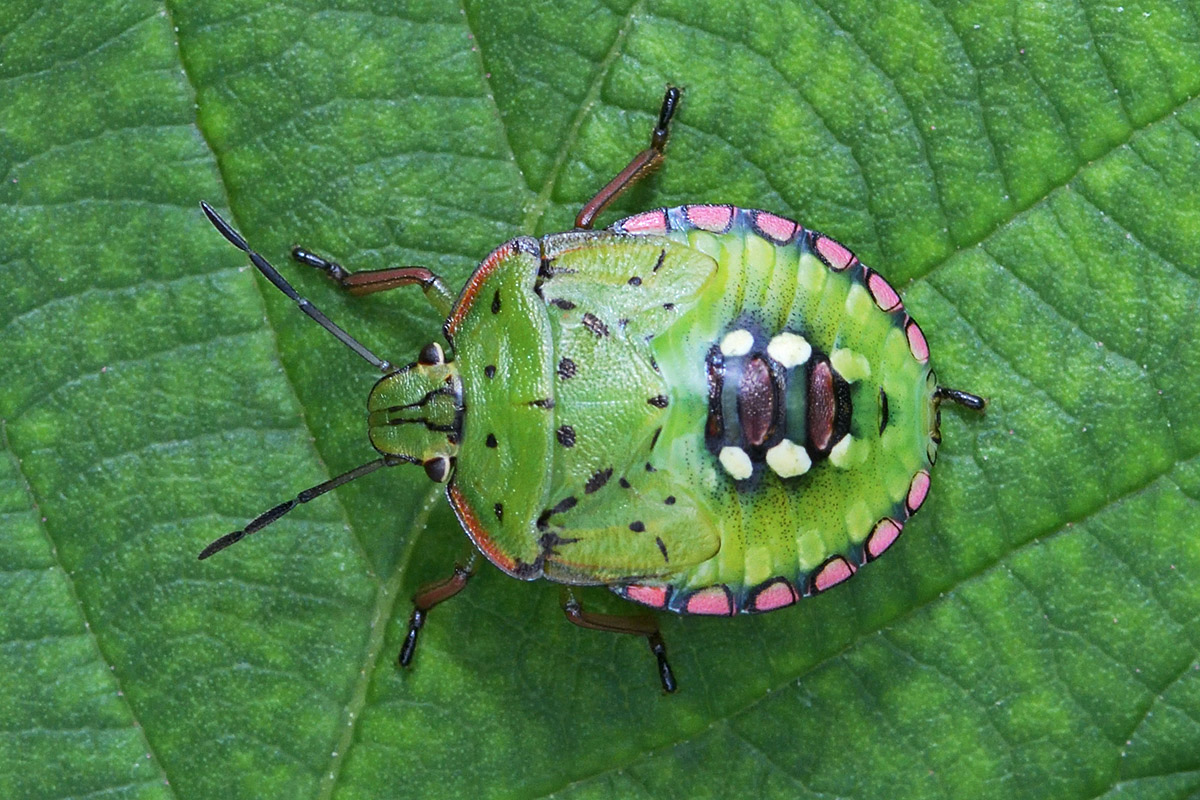The southern green shield bug is thought to have originated in Ethiopia. Meanwhile it is found all around the world. Because it prefers certain species of legumes, such as beans and soybeans, it is an economically important pest.
The southern green shield bug is in the order Hemiptera or true bugs. Adults are recognized by their shield-shape, their five-segmented antennae, and their malodorous scent. The adult males can reach a body length of about 12 millimeters, while females are slightly larger. The body is usually bright green, the eyes reddish or black. There is a row of three white spots on the scutellum.
The southern green shield bug completes its life cycle in 65 to 70 days. It overwinters as an adult and hides in the bark of trees or in leaf litter. As spring temperatures begin to warm, the southern green shield bug moves out of the winter cover and begins feeding.
After copulation the female lays 30 to 130 eggs at a time, in the form of an egg mass glued firmly to the bottom of a leaf. The eggs take between 5 and 21 days to develop, depending on the temperature. The newborn larvae molt five times before reaching maturity, increasing in size each time. Each instar stage lasts about a week and can be distinguished by the pattern of their exoskeleton coloration.
Today’s photo shows a colorful fifth instar nymph.
